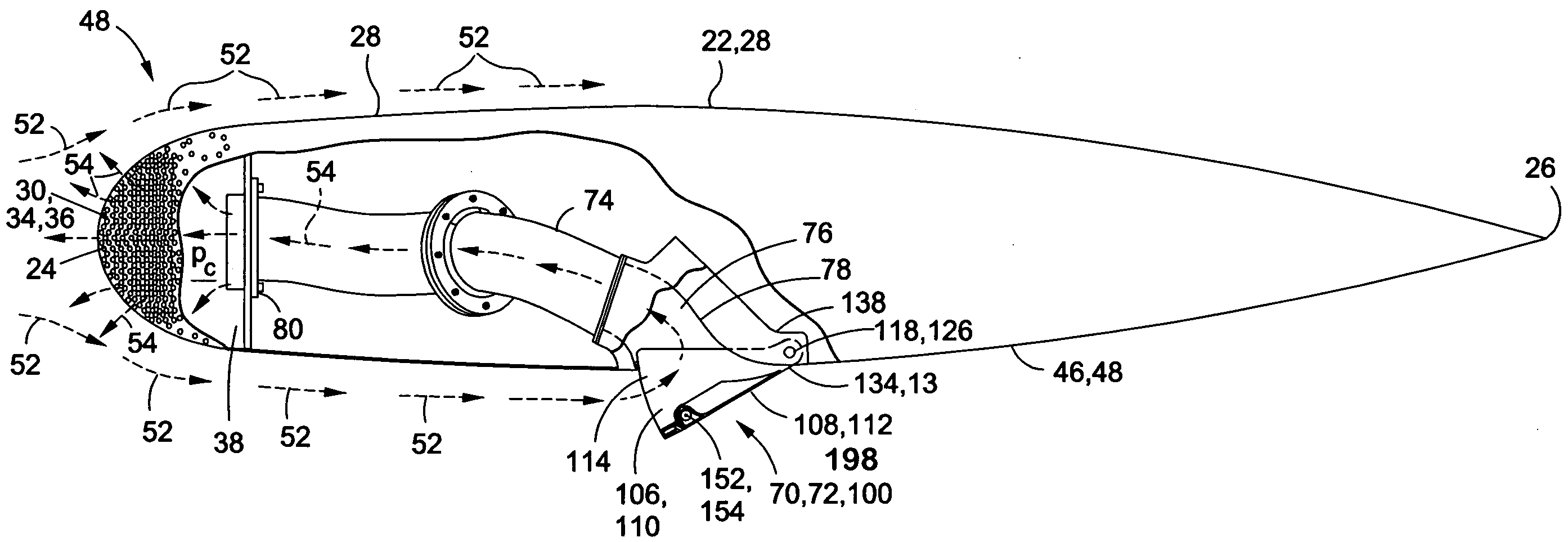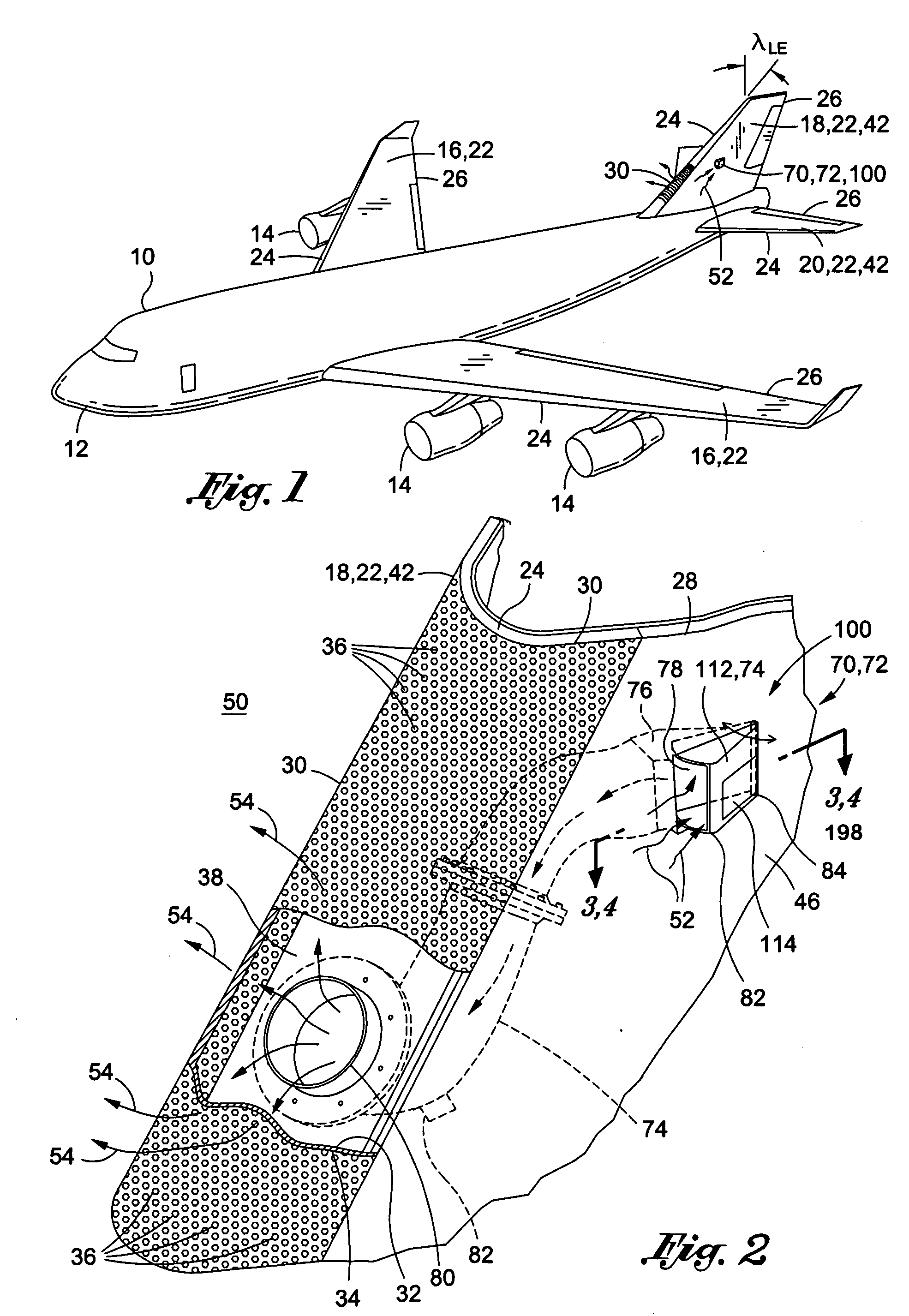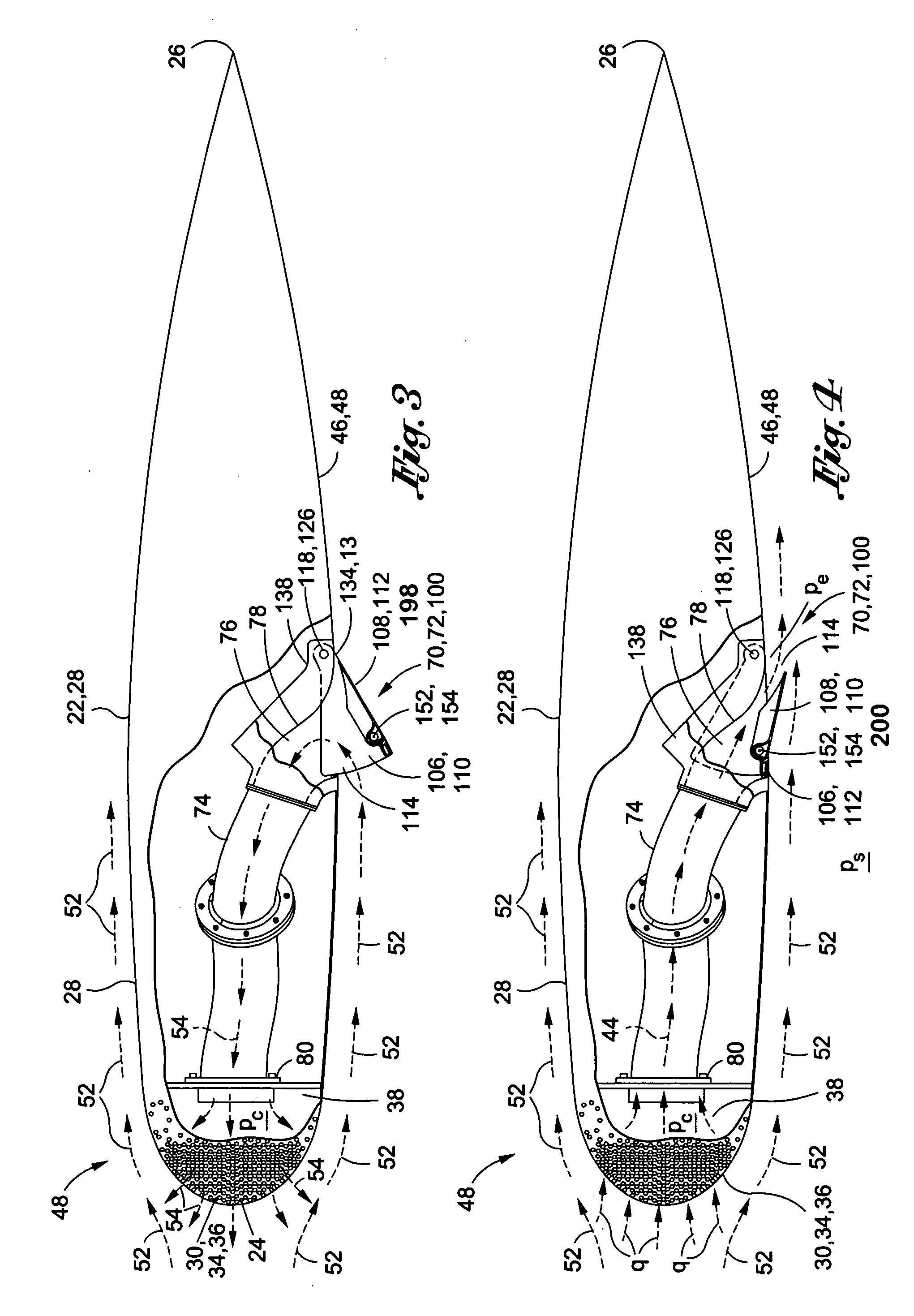Door assembly for laminar flow control system
a technology of laminar flow control and door assembly, which is applied in the direction of air intakes, air-flow influencers, transportation and packaging, etc., can solve the problems of increasing the weight, complexity and cost of the aircraft, and the requirement of a relatively large suction force, so as to increase the torsional rigidity of the second door, minimize twisting, and increase the torsional rigidity
- Summary
- Abstract
- Description
- Claims
- Application Information
AI Technical Summary
Benefits of technology
Problems solved by technology
Method used
Image
Examples
Embodiment Construction
[0044]Referring now to the drawings wherein the showings are for purposes of illustrating preferred and various embodiments of the disclosure only and not for purposes of limiting the same, shown in FIGS. 1-19 is a door assembly 100 as may be used with a laminar flow control system 72. The door assembly 100 may include a first door 106 integrated with a second door 108. Advantageously, by combining the first and second doors 106, 108, the door assembly 100 provides a simple arrangement for passive purging and passive suctioning of a laminar flow control system 72.
[0045]As shown in FIGS. 6, 8 and 10, the first door 106 may include a first door cowl 116. The second door 108 may include a second door cowl 148 that may be pivotably mounted to the first door 106 and which may form at least a portion of the first door cowl 116. For example, as shown in the Figures, the second door cowl 148 may be configured to comprise a majority of the area of the first door cowl 116 although smaller rel...
PUM
 Login to View More
Login to View More Abstract
Description
Claims
Application Information
 Login to View More
Login to View More - R&D
- Intellectual Property
- Life Sciences
- Materials
- Tech Scout
- Unparalleled Data Quality
- Higher Quality Content
- 60% Fewer Hallucinations
Browse by: Latest US Patents, China's latest patents, Technical Efficacy Thesaurus, Application Domain, Technology Topic, Popular Technical Reports.
© 2025 PatSnap. All rights reserved.Legal|Privacy policy|Modern Slavery Act Transparency Statement|Sitemap|About US| Contact US: help@patsnap.com



